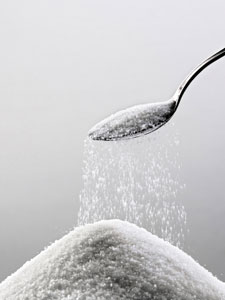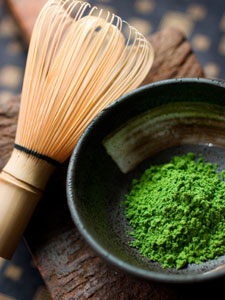Presto!: Instant Tea, Matcha and RTD


For your next cup, make yourself some tea -without using leaves.
While this may sound like a magic trick, it is actually the subject of our next lesson: ways to drink tea other than steeping leaves.
Walk into a most supermarkets in the US and next to the boxes of tea (unfortunately, many still will come in an inferior bagged form) are containers filled with an equally popular powder that goes by the same name. These packages, like the legendary alchemist who is said to be able to change iron into gold, claim to instantly change powder into tea with the simple addition of water. And they do...sort of.
In fact, supermarket tea sections devote permanent shelf space to instant tea, an indication of stability in the market. Millions of consumers loyally drink instant tea, usually cold. Instant tea can cover a very wide product range, usually depending not on the tea, but the flavoring used. The tea is usually a relatively a minor component, with sugar typically the primary ingredient, followed by flavorings, coloring agents, anti-caking agents, etc. Most instant teas do not contain real tea, rather tea extract. This artificial addition further separates instant teas from their parent leaves. However, one must not fail to appreciate the success of instant tea and recognize that it is a product by which its root is in tea.
Another tea that promises instant refreshment and joy (in a much more natural way) is Matcha. This is a very traditional, powdered green tea from Japan, stone-ground from brilliantly green, shade-grown tea leaves. Matcha has a very smooth, slightly sweet green flavor. The finest grades of this powder are used in the Japanese tea ceremony, where hot water is added and the tea is whisked into a thick froth using a bamboo whisk. You can find matcha in some high end grocery stores, but be sure to read the label, as often, these are lower grades with sugar added to them for use in sweet beverages, cooking, etc.
Anyone who is familiar with this tea will tell you: matcha tends to be expensive. There really is no such thing as a good quality matcha that is cheap, due to the amount of labor involved in bringing matcha to the market. Unlike regular green tea, matcha is derived from the same leaves that go into making Gyokuro. Gyokuro is a green tea that has been grown under shade three weeks prior to harvest. Like other types of green tea, the leaves are steamed to prevent oxidation. Unlike Gyokuro, the leaves are only processed to a certain point and are not rolled. Instead, after steaming, the leaf stems and veins are removed, producing a product known as "tencha". The tencha is further refined by grinding; traditionally on a stone mill, resulting in matcha. Since there are so many steps involved, each adding additional labor, matcha tends to be the most expensive of all green tea.
But probably the most instant of instant teas is called Ready to Drink (RTD). Also known as bottled tea, there once existed a strong stigma in the tea community about this beverage. Viewed largely as the stepchild of the big cola companies, RTD teas were thoroughly infused with their mass-production ethos: make it cheap, stack it high, move it fast.
However, a new trend is beginning to emerge from the creative folks of the tea industry. Fighting to erase the image that Goliath soda companies have painted for bottled iced tea, some true tea loving companies are introducing innovative bottling methods. They are making great teas available without the addition of unnecessary preservatives, and without covering the lack of quality tea with an overabundance of sugar or flavorings.
While we'd all like to be able to slow down and peacefully enjoy a nice cup of tea, this is not always practical. Instant teas, however, are not only drinks for the on-the-go type. With a wide range of flavor and quality available, there are teas that any tea lover would enjoy, instantly.
 teaclass
teaclass
